Multiple Choice
Hooke's Law states that the force F required to compress or stretch a spring (within its elastic limits) is proportional to the distance d that the spring is compressed or stretched from its original length. That is,  where k is the measure of the stiffness of the spring and is called the spring constant. The table below shows the elongation d in centimeters of a spring when a force of F kilograms is applied.
where k is the measure of the stiffness of the spring and is called the spring constant. The table below shows the elongation d in centimeters of a spring when a force of F kilograms is applied. 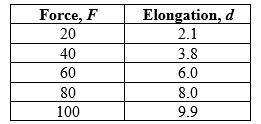
Sketch a scatter plot of the data.
A) 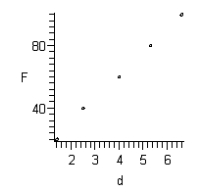
B) 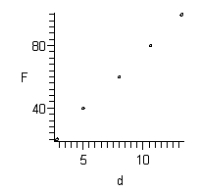
C) 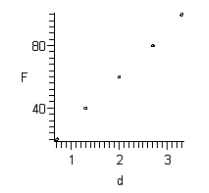
D) 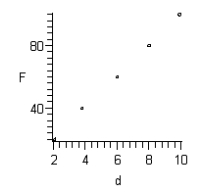
E) 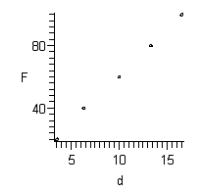
Correct Answer:

Verified
Correct Answer:
Verified
Q12: Find all solutions of the following equation
Q13: Find all solutions of <img src="https://d2lvgg3v3hfg70.cloudfront.net/TB8632/.jpg" alt="Find
Q14: Given the following equation, set <img src="https://d2lvgg3v3hfg70.cloudfront.net/TB8632/.jpg"
Q15: Which of the following is a zero
Q16: Which of the following is a zero
Q18: Determine any point(s) of intersection between the
Q19: Which of the following is a zero
Q20: Simplify <img src="https://d2lvgg3v3hfg70.cloudfront.net/TB8632/.jpg" alt="Simplify and
Q21: Solve <img src="https://d2lvgg3v3hfg70.cloudfront.net/TB8632/.jpg" alt="Solve by
Q22: Solve <img src="https://d2lvgg3v3hfg70.cloudfront.net/TB8632/.jpg" alt="Solve by